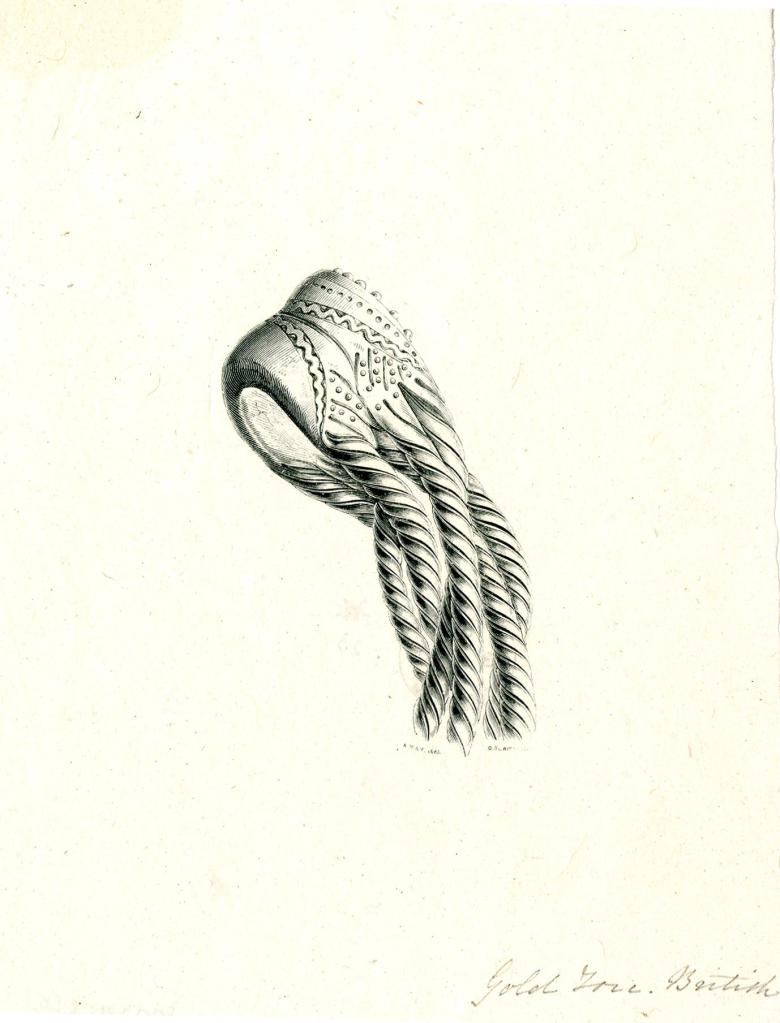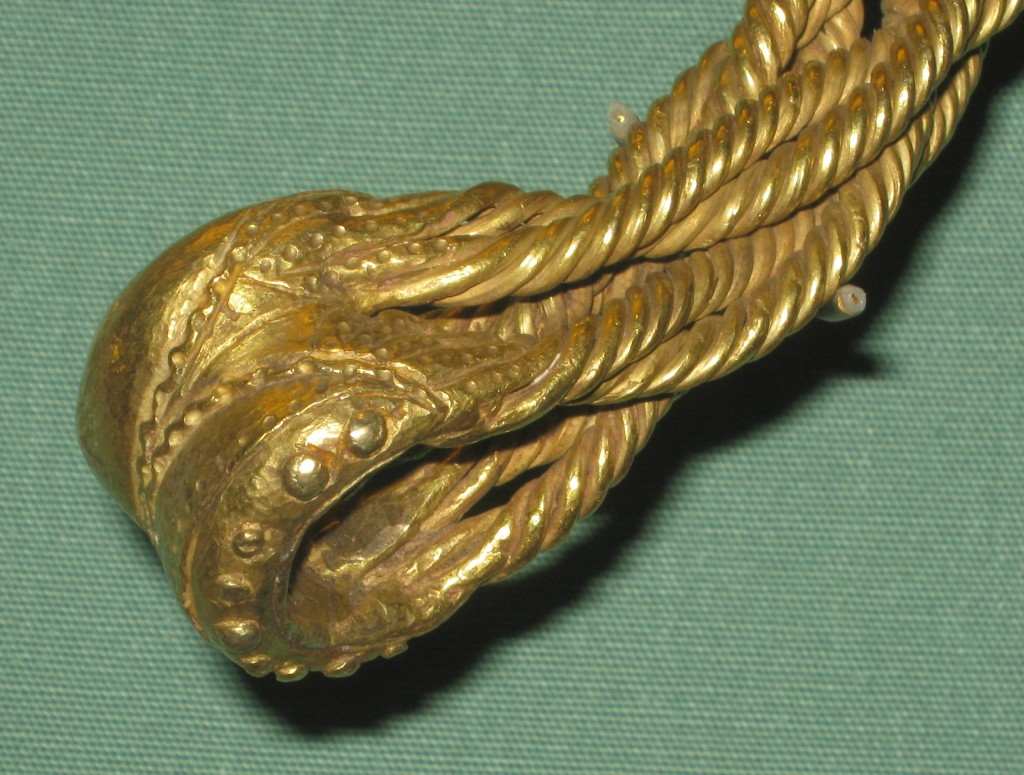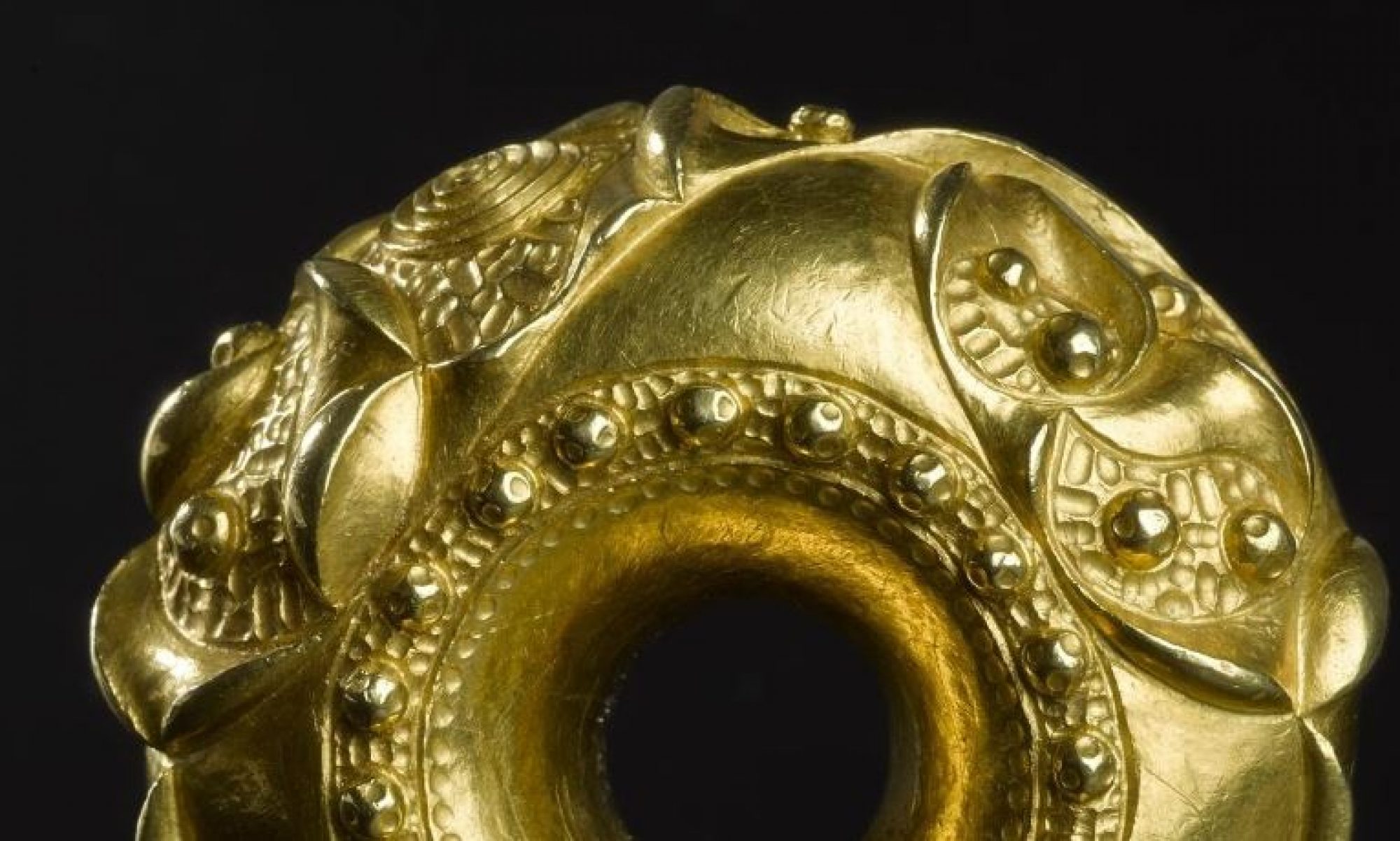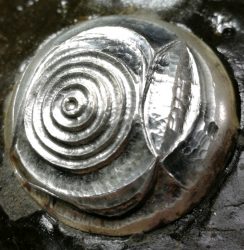Welcome back! Today is the fifth, and final, torc in this rather intriguing little collection. To be honest, I’ve saved the best until last as this really is a beauty: the Needwood Forest torc.

As with Glascote, I have spent a bit of time in the past researching the Needwood Forest torc. It was found in 1848 in a fox hole in Greaves Wood in Needwood Forest and, as it was found on – as then – Duchess of Lancaster land (now the Duchy of Lancaster) was retained in the Royal Collection. The torc is a neck torc of c.180mm diameter and weighs 427g (which is not especially heavy for a complex torc, the Newark torc weighing 699g and the Snettisham Great torc an astounding 1084g).
This torc is the perfect example of an antiquarian find: zero contextual information, and a documentary history spread across many collections and museums: a bit like the fox cubs who dug it up and had ‘been sporting with the Torquis’, this torc took some digging to uncover the scattered references! But I digress…
The torc now resides in the British Museum, on loan from the Royal Collection and – although not within their catalogue – it is on display in Room 50 (next to its ‘Not From Staffordshire, But Close’ torc cousin: the Middleton Hall torc).
The Needwood torc is first mentioned in a letter of 8th June 1848 – Account of a Gold Torquis found in Needwood Forest in Staffordshire, in a Letter to the Viscount Mahon, President, from Sir Henry Ellis, K.H. Secretary – sent to Viscount Mahon, the President of the Society of Antiquaries of London and published in April 1849. The letter accompanied a presentation of the torc to the great and the good of the Society and includes the usual florid prose of the age – many references to ‘vanquished Gauls’ and torc capturing Romans. The dating appears to have been derived more from Roman sources (e.g. Dio Cassius’ description of Boudica and Livy’s description of the Boii tribe), than any actual evidence. But Ellis does note the exceptional quality of this torc and it should be said that, at this date, only the Netherurd terminal (found in 1806 and at that time assumed to be a staff head, and not a torc) had been found. As such, I believe the Needwood Forest torc to be the first gold, Iron Age, torc to be recognised as such in the UK. Quite an achievement!
Ellis included with his letter, an exquisite drawing – by George Scharf – of the torc, the original of which now resides in the collections of the Society of Antiquaries of London .

In addition, there is a further print, in the British Museum collection, made by Orlando Jewitt, from a drawing by Albert Way.

The torc was mentioned in 1933 by E. T. Leeds in his Antiquaries Journal piece ‘Torcs of the early Iron Age in Britain’ , however the mention is brief and without much information. The next writing we have about the torc is a more wide ranging, albeit as brief, description from C. F. C. Hawkes in the British Museum Quarterly from 1936. I have to admit, arrogant as it may sound, I tend to take other people’s descriptions of torcs with a pinch of salt. Again, it comes back to my ‘until I’ve seen the torc myself’ adage: experience has shown that often aspects are missed, or misunderstood. For now, I’m relying on photos and what I’ve been able to see when looking at it in the case at the British Museum.
Initial thoughts:
- This one really is a beauty: overcast terminals, like Glascote, but very different, although very well made. Yes, the same rick-rack punched wavy line is present, but the decoration is way more fluid on the Needwood torc (there’s even a couple of over-punches where dots have been added twice), almost like whoever made Needwood is moving faster, is more ‘free’ in their craft. Very Netherurd to be honest.

- It really doesn’t feel like it’s a sibling to Glascote: just way too dissimilar in terminal and wire form.
- The wiring is more coiled, which is different to the twist-and-plait of the Glascote neck ring. The attachment of the wires in Needwood is beautifully and finely done.
- The decoration is very much in the Snettisham Style, with punched dots, rick-rack, and applied dummy rivets (although these have not got punched dots on them, as would be typical). It reminds me of Netherurd somewhat, and also the Snettisham B52 torc, especially in the wiring.
- The other torc it reminds me of, in the wiring, is the South West Norfolk torc which has similar coiled wiring, and also the same rick-rack line as Glascote: could this be a connection to Glascote, via the South West Norfolk torc? Or a coincidence?
And on that note, I will leave it there. Now we’ve looked at all the torcs, next comes the fun part: what has been said about these torcs in the past? where were they found? and what might any of that tell us…? or not…?
So until next time we torc, please remember to click on ‘Subscribe’ to be kept up to date.



2 Replies to “The Staffordshire Torc Odyssey: 6 Needwood Forest”